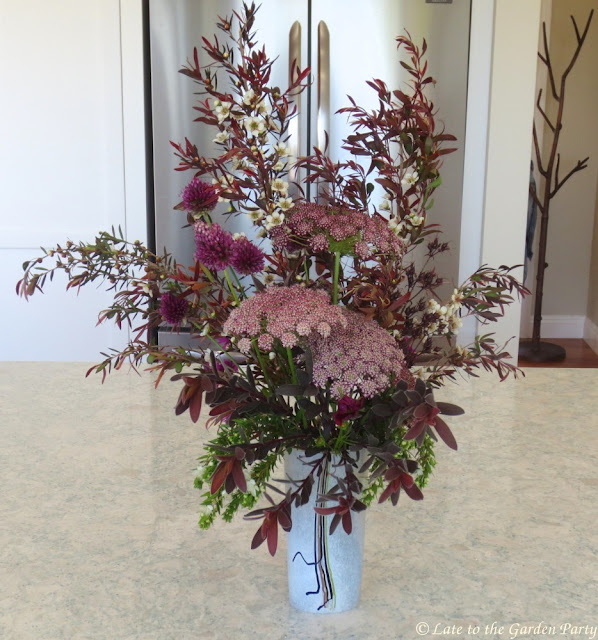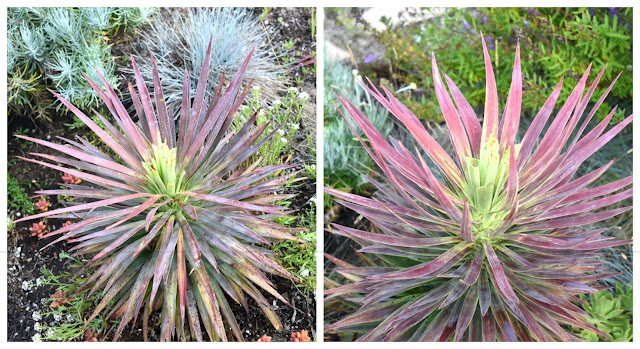A week ago today, the weather was perfect. The temperature was the very definition of comfortable, not too hot and not too cold - Goldilocks would have approved. The air was clear (not an especially common occurrence here) and the sky was blue and decorated with puffy white clouds. I was captivated and felt compelled to take photographs of the sky from my back garden.
Yesterday, you couldn't see the sky for the clouds. We often get a morning marine layer here this time of year but it normally fades away well before noon. However, yesterday we spent the entire day wrapped in a cloud. Neither the sun nor blue sky made an appearance.
 |
| Late morning view looking to the northeast |
 |
| View near noon looking toward the harbor, which was invisible in the mist, and also eerily quiet |
 |
| The humidity level remained at the low-mid 90% level all day. This reading was taken at 1:31pm. (The weather station is still on standard time.) |
 |
| This late afternoon shot from our back door captured some of the city below us, although I still couldn't see the harbor with my naked eye |
It felt particularly odd because areas to both the east (in California's inland valleys) and the north (in the Pacific Northwest) were cooking. Further evidence that Mother Nature can never be accused of being even-handed. The circumstances led me to think of Joni Mitchell's song 'Both Sides, Now', which is currently playing on repeat in my head.
I hope the situations of those of you who struggled with heat earlier this week have improved and that your weather returns to something resembling normality. For more Wednesday Vignettes, visit Anna at Flutter & Hum.
All material © 2012-2021 by Kris Peterson for Late to the Garden Party
















































